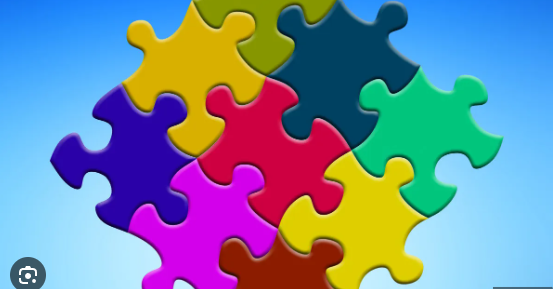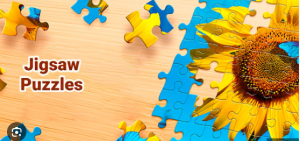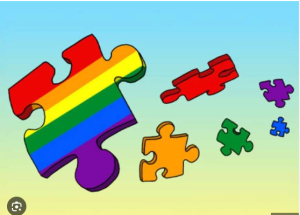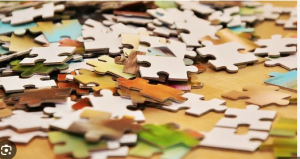Introduction:
Puzzles have long captivated minds, provoking curiosity and engaging individuals across ages. But do they truly fit the criteria of an activity, or are they something more elusive?
Defining Activities and Puzzles:
- Defining Activities: Begin by establishing a comprehensive definition of what constitutes an activity. Explore the various characteristics that define an activity, such as engagement, purpose, and involvement.
- Understanding Puzzles: Similarly, delve into what defines a puzzle. Unpack its components—mental challenge, problem-solving, structured pieces—and how they contribute to the overall experience.
The Nature of Puzzles:
- Cognitive Engagement: Discuss how puzzles demand cognitive engagement. Detail how they stimulate various mental faculties, including problem-solving skills, critical thinking, and pattern recognition.
- Physical Component: Touch upon the physical aspect of puzzles—manipulating pieces, arranging or sorting—highlighting the interactive nature of this pastime.
Activities vs. Puzzles:
- Comparative Analysis: Draw parallels and distinctions between activities and puzzles. Examine their similarities, exploring how both engage individuals and offer a sense of accomplishment. Contrast their differences, focusing on the specific characteristics that set puzzles apart from typical activities.
Psychological and Educational Aspects:
- Psychological Benefits: Explore the psychological benefits of engaging in puzzles. Discuss how they promote relaxation, stress reduction, and mental agility.
- Educational Value: Highlight the educational significance of puzzles, especially in fostering skills like patience, perseverance, and spatial reasoning, and their potential application in educational settings.
Societal Impact and Cultural Significance:
- Social Dynamics: Analyze the social aspects of puzzle-solving—its potential for collaboration, bonding, and social interaction among individuals.
- Cultural Relevance: Touch upon the historical significance of puzzles across different cultures and time periods.
Conclusion:
- Summarize Key Points: Recap the defining elements of activities and puzzles discussed in the article.
- Final Thoughts: Offer a conclusive stance on whether puzzles qualify as activities, considering the diverse perspectives and insights gathered throughout the article.
Title: Is a Puzzle an Activity? Unveiling the Intricacies of Puzzle Solving
Introduction: Puzzles have captivated minds for centuries, enticing individuals with their enigmatic allure. Often debated, the categorization of puzzles as mere leisurely activities or profound mental exercises remains a topic of discussion. Delving into the intricacies of puzzles, their cognitive impacts, and the experiences they offer can shed light on whether they qualify as activities or extend beyond.
Defining Puzzles:
- Establishing a precise definition of puzzles, encompassing their diverse forms and functions.
- Examining various types, from jigsaw puzzles to riddles, crosswords, and mathematical conundrums.
The Essence of Activity:
- Exploring the concept of ‘activity’ and its characteristics, encompassing physical, mental, and intellectual engagement.
- Evaluating how puzzles align with the fundamental traits of activities through cognitive involvement and problem-solving skills.
Psychological Engagement in Puzzle Solving:
- Unveiling the cognitive processes involved in tackling puzzles, including problem-solving, critical thinking, and pattern recognition.
- Discussing the psychological benefits such as stress reduction, enhanced memory, and improved concentration attributed to engaging with puzzles.
Experiential Insights:
- Providing personal anecdotes and experiences of individuals engrossed in puzzle-solving activities.
- Examining how puzzles serve as a platform for social interaction, fostering teamwork, and promoting communication among participants.
Educational Significance:
- Investigating the role of puzzles in education, exploring their effectiveness in enhancing learning outcomes across different age groups.
- Analyzing the integration of puzzles in curriculum development and their contribution to skill acquisition and cognitive development.
Leisure or Intellectual Pursuit?
- Weighing contrasting viewpoints regarding puzzles as recreational pastimes versus tools for intellectual stimulation.
- Debating the notion of puzzles as a leisure activity versus a cognitive exercise that nurtures mental acuity and problem-solving skills.
Cultural and Historical Perspective:
- Tracing the historical evolution of puzzles and their cultural significance across civilizations.
- Examining how puzzles have transcended time, retaining their relevance and allure in various cultures worldwide.
Contemporary Trends and Evolution:
- Highlighting the modern-day adaptation of puzzles, including digital formats and gamification.
- Assessing the impact of technology on the perception and accessibility of puzzles in today’s society.
Conclusion:
- Synthesizing the discussion to delineate whether puzzles align with the definition of an activity.
- Emphasizing the multifaceted nature of puzzles, bridging leisurely pursuits and intellectual engagements, ultimately justifying their classification as activities.
Introduction (Approx. 200-250 words)
A puzzle, in its myriad forms, has been a timeless source of entertainment and mental challenge for centuries. From jigsaw puzzles to crosswords, sudoku, and brain teasers, these perplexing diversions have captivated individuals of all ages. But is a puzzle merely a form of leisure, or does it transcend mere entertainment to become a bona fide cognitive activity? Exploring the facets of puzzles as an engaging mental exercise sheds light on their multifaceted nature and their place in stimulating the intellect.
Defining Puzzles (Approx. 200-250 words)
To understand the essence of a puzzle, defining its characteristics is pivotal. A puzzle encompasses a broad spectrum of challenges that necessitate problem-solving, critical thinking, and creative strategies. Whether it’s assembling scattered pieces to form a coherent image or deciphering complex clues to fill in the blanks, puzzles encompass various types and difficulty levels. Their common thread lies in the mental exertion they demand, often pushing individuals beyond conventional thinking patterns.
Psychological Aspect of Puzzles (Approx. 400-500 words)
Delving into the psychology behind engaging in puzzles unveils their impact on cognitive abilities. Studies suggest that puzzles stimulate various regions of the brain, enhancing problem-solving skills, spatial reasoning, and memory retention. The satisfaction derived from successfully completing a puzzle triggers the release of dopamine, contributing to a sense of accomplishment and boosting mood. Furthermore, puzzles offer a therapeutic aspect, aiding in stress reduction and relaxation by diverting focus away from daily stressors.
Educational Benefits (Approx. 400-500 words)
Puzzles extend beyond entertainment; they serve as valuable educational tools, especially for children. They promote the development of critical skills like logical reasoning, spatial awareness, and hand-eye coordination. Educators often integrate puzzles into learning environments to foster creativity and enhance students’ cognitive abilities. Moreover, puzzles tailored to specific subjects, such as math or language, facilitate a fun and interactive approach to learning, making complex concepts more accessible and engaging.
Cultural and Social Significance (Approx. 300-400 words)
Across cultures, puzzles hold significant cultural and social value. They act as social catalysts, bringing people together to collaborate, communicate, and bond over shared challenges. Whether in family gatherings or community events, puzzles serve as icebreakers, fostering camaraderie and teamwork. Additionally, their presence in various cultural narratives and historical contexts reflects their enduring importance in human society.
Conclusion (Approx. 200-250 words)
In conclusion, labeling a puzzle solely as a recreational activity undermines its multifaceted role in human cognition, education, and social dynamics. It stands as a testament to our innate curiosity and problem-solving abilities, offering not just amusement but also cognitive stimulation and learning opportunities. Embracing puzzles as an enriching mental exercise elevates their significance beyond mere entertainment, underscoring their rightful place as engaging activities that challenge and invigorate the mind.



